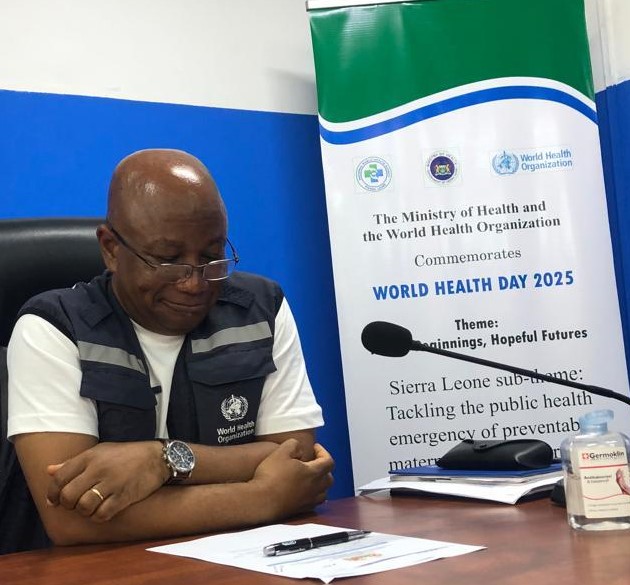By Rose Aba Akafo
Data from the United Nations Maternal Mortality Estimation Group indicates that, between 2020 and 2023, Sierra Leone’s maternal death rates decreased from 443 to 354 per 100,000 live births, Health Minister Dr. Austin Demby said on Monday.
“This shows we are on the right trajectory of reducing maternal mortality to less than 300 by 2025,” he said.
Dr. Demby was speaking at a joint news conference in Freetown to commemorate World Health Day and the 77th anniversary of the World Health Organization (WHO).
He said the introduction of a person-centered life stages approach and the use of a pregnancy registration and service tracking application (PReSTack) have helped to reduce maternal deaths in the country.
“Despite these efforts, more work still needs to be done to achieve the SDG target of reducing maternal mortality to less than 70 per 100,000 live births by 2030,” Dr. Demby stated.
The global theme, “Healthy Beginnings, Hopeful Futures,” was adapted to fit into the local context: “Tackling the Public Health Emergency of Preventable Maternal and Child Mortality in Sierra Leone.”
Speaking to pressmen, WHO Country Representative Dr. George Ameh said Sierra Leone has made significant progress in reducing maternal deaths by 78% since the year 2000. He attributed this success to an increase in the capacity of healthcare workers, improved access to healthcare services, and an upgraded data-driven decision-making process.

He noted that a lot has been invested in scaling up the number and skills of health workers, expanding access to high-impact interventions, and removing financial and geographical access barriers while boosting the availability and quality of data systems to track progress and provide rapid course corrections.
Dr. Ameh also stressed the economic and social benefits of investing in maternal and newborn health, stating that, “Every dollar invested in maternal and newborn health delivers significant returns.”
While acknowledging the progress made, both Demby and Ameh underscored the need for continued efforts to meet global targets for reducing maternal mortality. They also called for collaborative action from health workers, community leaders, and the public while reinforcing the message that “no woman should die while giving birth, and no child should die before reaching their full potential.”



